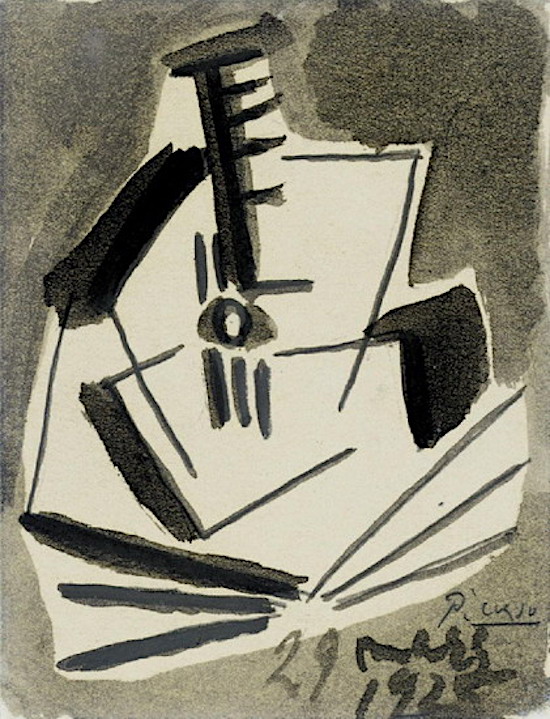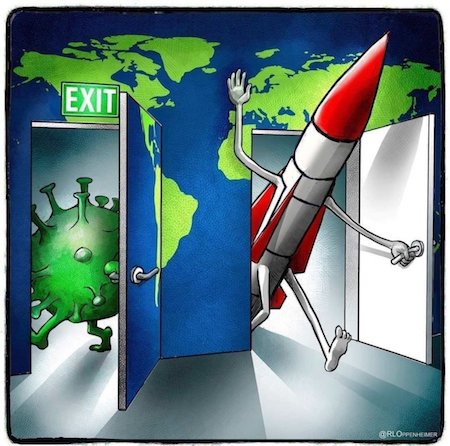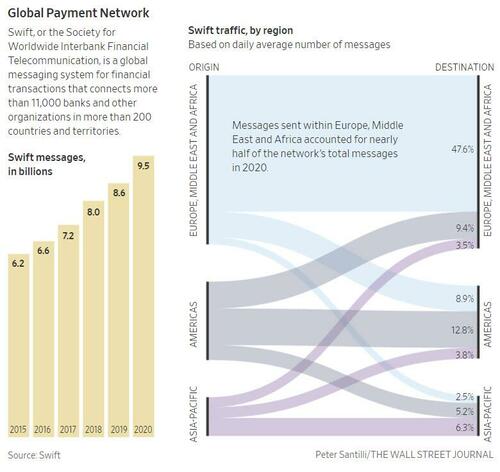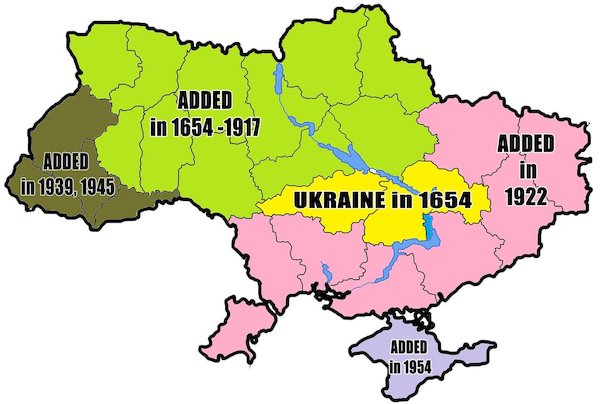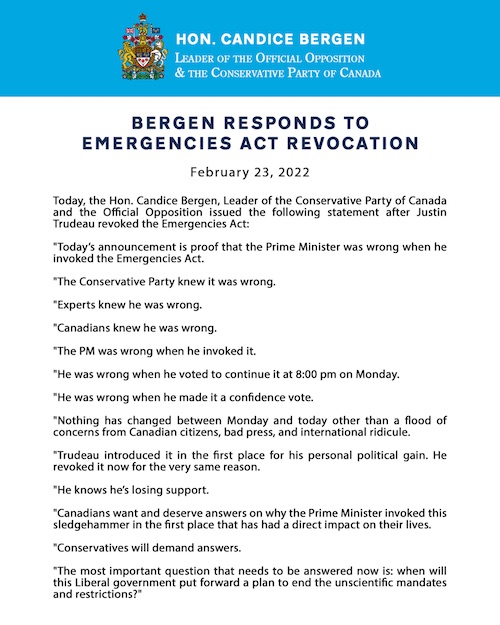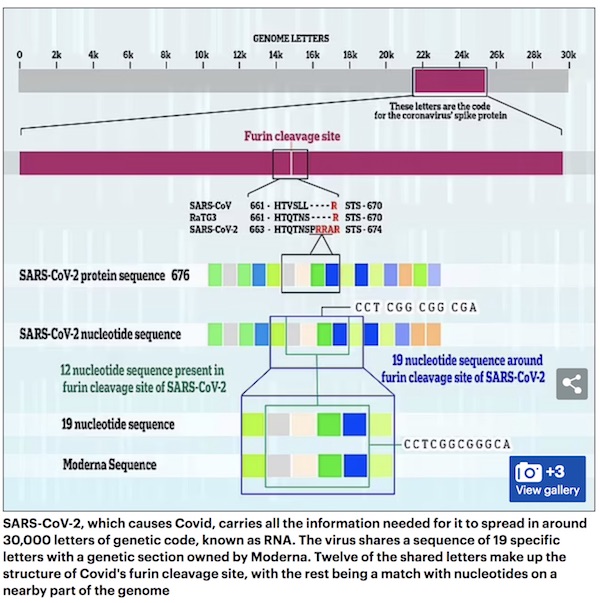
Alfred Eisenstaedt The kiss (V-J Day in Times Square) 1945



Some day we’ll assess this moment with clear heads
https://twitter.com/i/status/1503265313474977793

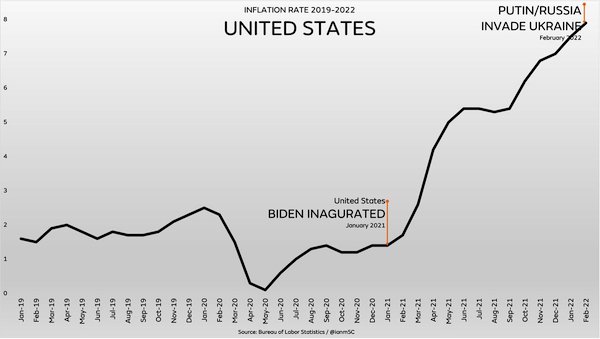

Veritas FDA
https://twitter.com/i/status/1503264527642775553

“The cost of fertilizer is up as much as 500% in some areas..”
“..we are not really going to see those impacts until this coming summer.”
• US Farmers Hit Hard By Price Increases, Fertilizer Costs (JTN)
Goods and services around the country are becoming increasingly more expensive, but farmers may be among the hardest hit as inflation, supply chain issues, and Russia’s invasion of Ukraine are expected to send food prices soaring even higher. That impact is being felt by farmers around the country. “The cost of fertilizer is up as much as 500% in some areas,” said Indiana Farm Bureau President Randy Kron. “It would be unbelievable if I hadn’t seen it for myself as I priced fertilizer for our farm in southern Indiana. Fertilizer is a global commodity and can be influenced by multiple market factors, including the situation in Ukraine, and all of these are helping to drive up costs.” Ukraine is a significant supplier of both crops and fertilizer materials, adding to the concern that the invasion will likely lead to shortages and price increases.
Fertilizer prices for nitrogen, phosphorous and potassium, called NPK, have exploded since December 2020. “Because of the seasonal aspects of … this agriculture industry, it takes about six to nine months for the impacts felt in the impact market to really work its way through the supply chain and reach the consumer,” said Nathon Carson, head of supply chain operations for Chemical Dynamics, a multi-million dollar fertilizer supplier based in Florida servicing 12 states. “The crazy thing is, fertilizer prices for NPK, especially nitrogen, the most important nutrient, went up by about … doubled essentially in Q4 of 2021, which means we are not really going to see those impacts until this coming summer.” That fertilizer price increase is one of several factors expected to push food prices up even higher this year.
“Food prices are going to continue to go up dramatically,” Carson said. “I was expecting food prices to go up about 10% in the U.S. before midterms, so around August, another 5 or so percent to follow by the end of the year … You could see 20% food price inflation by the end of the year in the U.S. That is a possibility. You won’t see famine in the U.S. Our food system is very, very resilient, but you will see shortages. You won’t have the same product selection that you’re used to.” These food price issues have only been egged on by runaway federal spending, which has helped send inflation soaring in the past year. The Bureau of Labor Statistics reported last week that the Consumer Price index, a leading marker of inflation, rose 7.9% in the past 12 months. BLS said that the food price index rose 8.6% over the last 12 months, the largest 12-month spike since April 1981.

”Buy a 2nd freezer, and stock it. Soon.”
• “Media Isn’t Warning You” That US Careening Towards Food Crisis (ZH)
Two weeks after the Russia-Ukraine crisis began, the world is quickly moving toward a food crisis that could affect millions of people. A spillover of the crisis could soon spark agricultural mayhem in the US. The curtailment of agricultural exports from Russia and Ukraine will have dramatic knock-on effects on global food supplies. Both countries are known as the ‘breadbasket of the world’ and are responsible for a quarter of the international wheat trade, about a fifth of corn, and 12% of all calories traded globally. Another major problem is access to fertilizers, as Russia has banned exports of the nutrients. It’s not whether or not there will be a food crisis. It’s how big that crisis will be.
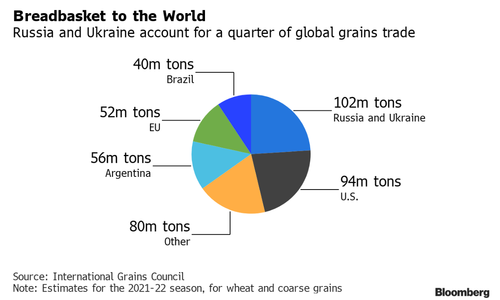
We’ve already noted a handful of emerging market countries to monitor as the Russian invasion is choking off grain exports to them and causing prices to rise, which may result in social unrest. Even in the Western world, agricultural markets have not been immune, and higher prices have stung consumers. A tweet from Douglas Karr, the founder of the businesses blog Martech Zone, made the point the “media isn’t even warning you” a food crisis in America is emerging. Karr said he spoke with numerous folks in the food industry who said farmers in the South and Midwest are having trouble procuring fertilizer to grow crops ahead of planting season. He said farmers in the “Midwest are switching,” likely referring to crops that need fewer nutrients because they “can’t get nitrogen nor fertilizer.”

Even before Russia invaded Ukraine, the global food system was strained. Snarled supply chains and adverse weather conditions in top growing regions of the world resulted in low crop yields and rising prices. The supply shock of Ukraine will amplify the crisis as the UN warned global food prices could jump 8%-20% from here (prices are already at record highs). Responding to Karr’s viral tweet, some people said they were buying a freezer to panic hoard food supplies as the worst food crisis has yet to come. “Likely getting a 2nd chest freezer soon and stuffing it with meats/frozen vegetables/etc. Also, it looks like “preppers” who were dismissed or made fun of last decade are about to be set on being right,” one person said. Another person said, “Read this and then understand why in the last 6 months several publications have been grooming us to accept eating bugs. All of this was planned. Buy a 2nd freezer, and stock it. Soon.”

“Siluanov said on Sunday that it would be “absolutely fair” for Russia to make sovereign debt payments in roubles until its foreign exchange reserves were unfrozen..”
• Russian Default On Debts No Longer ‘Improbable’, Says IMF Head (G.)
A Russian default on its debts after western sanctions over its invasion of Ukraine is no longer “improbable”, but would not trigger a global financial crisis, the head of the International Monetary Fund said on Sunday. The Washington-based fund’s managing director, Kristalina Georgieva, said the sanctions imposed by the United States and other nations were already having a “severe” impact on the Russian economy and would trigger a deep recession there this year. The war in Ukraine will also drive up food and energy prices, leading to hunger in Africa, she added. Georgieva told CBS’s Face the Nation programme: “In terms of servicing debt obligations, I can say that we no longer think of Russian default as an improbable event. Russia has the money to service its debt, but cannot access it.
“What I’m more concerned about is that there are consequences that go beyond Ukraine and Russia.” Last week, the World Bank’s chief economist, Carmen Reinhart, warned that Russia and its ally Belarus were “mightily close” to default. Asked whether a Russian default could trigger a financial crisis around the world, Georgieva said: “For now, no.” The total exposure of banks to Russia amounted to around $120bn, an amount that while not insignificant, was “not systematically relevant”, she said. Last week, she said the IMF would downgrade its previous forecast for 4.4% global economic growth in 2022 as a result of the war. Separately, Russia said on Sunday that it was counting on China to help it withstand the blow to its economy from sanctions, but the US has warned Beijing not to provide that support.
The Russian finance minister, Anton Siluanov, said Moscow was unable to access $300bn of its $640bn in gold and foreign exchange reserves, but still held part of its reserves in the Chinese currency, the yuan. “And we see what pressure is being exerted by western countries on China in order to limit mutual trade with China. Of course, there is pressure to limit access to those reserves,” he said. “But our partnership with China will still allow us to maintain the cooperation that we have achieved, and not only maintain, but also increase it in an environment where western markets are closing.” Russia is due to make two interest payments on 16 March. However, it will have a 30-day grace period to make the coupon payments. Siluanov said on Sunday that it would be “absolutely fair” for Russia to make sovereign debt payments in roubles until its foreign exchange reserves were unfrozen, according to Interfax.

Can’t pay in rubles, IMF? Not so fast…
• India Is Mulling Rupee-Ruble Payments System for Trade with Russia (Scofield)
India is discussing how to set up a rupee-ruble payment mechanism to enable it to trade with Russia, to circumvent the U.S. sanctions regime. India abstained from voting on the March United Nations (UN) General Assembly Resolution demanding an end to Russian offensive in Ukraine (General Assembly resolution demands end to Russian offensive in Ukraine). Since its Independence, India has tried to steer a neutral course between the U.S. and Russia (and previously, the USSR). During the 1950s, India’s first prime minister, Jawaharlal Nehru, was a prime architect behind the Non-Aligned Movement, under which developing countries tried to pursue their national interests without binding themselves to either the U.S. or Soviet bloc. India, Indonesia, and Yugoslavia were mainstays of that movement, which today includes 120 member states, 18 observer states, and 10 international organisations.
Following the collapse of the Soviet Union, India developed closer relations with the United States. Most recently, under prime minister Narendra Modi, India’s policy tilted even more decisively in a pro-U.S. direction. Modi and Trump shared a strong affinity, and Modi even travelled to the U.S, to host massive rallies intended to galvanize Indian Americans in support of Trump. See this BBC account for further details, What did the Trump-Modi ‘bromance’ achieve? During the last several months, several considerations have prompted the Modi government to rethink the wisdom of putting all its eggs in the U.S. basket. Instead, India is returning to a more balanced approach, assessing its national interests vis-a-vis those of other countries and acting accordingly.
Two developments this summer caused India to question the reliability and integrity of the U.S. as an ally. The first was the manner of the U.S. pullout from Afghanistan, which had External Affairs Minister S. Jaishankar wondering about the value of U.S. security guarantees. Washington’s Ukraine policy is only increasing those misgivings. The United States was willing to push Ukraine to take actions that many – including Henry Kissinger, George Kennan, and Noam Chomsky – warned Russia couldn’t abide. But then when the shooting started, the United States wasn’t willing to get in line of fire. And in the second, in September, the U.S. stunned many when it announced a new Australia/United Kingdom/United States security grouping (AUKUS), as part of which Australia would receive American nuclear submarines.

They must be enjoying the situation…
• The US Is Still Not Trying Diplomacy With Putin Over Ukraine (Antiwar)
As Russia’s invasion of Ukraine enters its third week, there is still no sign that the Biden administration is attempting high-level diplomacy with Moscow as a way to possibly end the fighting. The Washington Post reported on Thursday that the Biden administration doesn’t see the conflict ending anytime soon and that its current strategy is to impose economic pain on Russia and support Ukraine’s military “in its effort to inflict as many defeats on Russia as possible.” It’s clear at this point that the Western sanctions were factored into Russian President Vladimir Putin’s decision to attack Ukraine as they haven’t done anything to deter him. But US officials still say they are in no rush to engage directly with Putin.
Secretary of State Antony Blinken claimed that in the months leading up to the invasion, the US gave Putin “possible off-ramps.” But during the negotiations, the US ignored Putin’s key demands. Putin wanted a guarantee that Ukraine wouldn’t ever join NATO, and even though President Biden said Kyiv wouldn’t be joining the military alliance anytime soon, the US refused to make the promise. Now, Russia has said it will stop its assault if Ukraine declares neutrality, recognizes Crimea as Russian territory, and recognizes the independence of the breakaway Donbas republics. Instead of supporting negotiations on these terms that could lead to a potential ceasefire, the US is working with its NATO allies to flood weapons into Ukraine.
Blinken said on Wednesday that the Biden administration expects “a strategic defeat” of Russia in Ukraine despite Moscow’s “short-term” gains. “We’ll accomplish this by backing Ukrainians in their fight, by remaining united in holding Russia accountable through the devastating sanctions, the diplomatic isolation and other measures,” Blinken said. While Blinken says the US expects a Russian defeat in Ukraine, Biden officials told the Post that they don’t see a “clear end to the military phase of this conflict,” meaning the US expects a long, bloody insurgency in Ukraine, and is willing to support it.
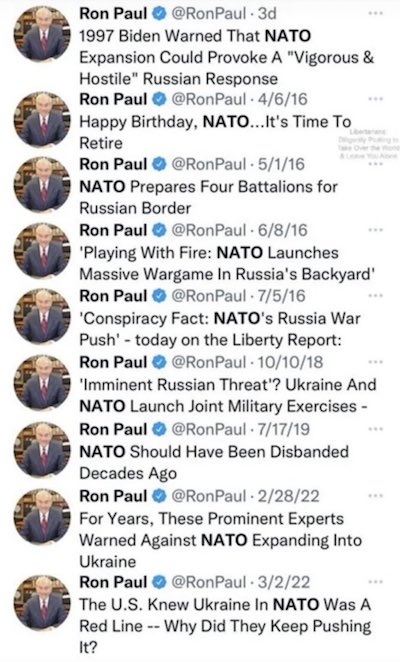

Russia attacks Yavoriv because of weapons deliveries. There are no US miilitary left there.
• Russia Seeking China’s Military Help In Ukraine, US “Sources” Say (ZH)
According to Reuters, when asked about claims that Russia is requesting military help from China, the spokesperson for China’s embassy in Washington responded “I’ve never heard of that.” The spokesperson, Liu Pengyu, said China’s priority was to prevent the tense situation in Ukraine from getting out of control. “The current situation in Ukraine is indeed disconcerting,” he said in an emailed response to a query from Reuters, adding that “the high priority now is to prevent the tense situation from escalating or even getting out of control.” Earlier when commenting on what’s been reported as “significant progress” made in Russia-Ukraine talks, we noted that “It remains to be seen if this is the start of a peaceful resolution to the war or just another false dawn.”
Well, just a few hours later the false dawn has arrived via a bombshell FT report citing anonymous Biden administration officials who say that Russia has issued a formal request from China for military support in its invasion of Ukraine. This was followed minutes later with similar Washington Post and New York Times stories in what looks like a US “coordinated leak” effort to send a message and warning to China. “Russia has asked China for military equipment to support its invasion of Ukraine, according to [anonymous] US officials, sparking concern in the White House that Beijing may undermine western efforts to help Ukrainian forces defend their country,” FT writes.
[..] The fresh attack on Yavoriv is being taken also as a clear warning to Washington, again given it was a well-known site which previously housed US military trainers engaged in short-term missions to support Ukrainian national forces prior to the invasion began. Training was going on up until earlier in February. Setting the stage for a potential major escalation with Western and NATO powers, the Kremlin warned on Saturday that the Russian military is prepared to target Western arms shipments that are continuing to pour into Ukraine. Russia’s Deputy FM Sergei Ryabkov said on state TV that Washington had been informed in the last days that Moscow will see weapons supply convoys entering Ukraine as “legitimate targets”.
“We warned the United States that the orchestrated pumping of weapons from a number of countries is not just a dangerous move, it is a move that turns these convoys into legitimate targets,” Ryabkov said in the remarks, which served as a severe warning to the West.
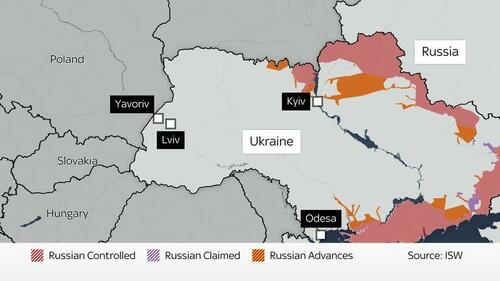

“There tends to be a lot of virtue signaling in how people behave these days, and to take it out on a business like this is unfortunate.”
• The West’s Cancel Culture Targets All Things Russian (JTN)
In New York City, despite many owners of Russian restaurants opposing Putin’s invasion of Ukraine — or even being Ukrainian themselves — they have experienced canceled reservations, bad reviews and social media campaigns, unusually low turnout, and vandalism, The New York Times reported. Even as some restaurants have plastered signs in support of Ukraine on their doors, they are still dealing with backlash from customers. Some patrons, however, are showing support for the restaurants as they struggle to cope with the commercial fallout from the invasion, according to the Times. “We just thought Russian businesses are probably being unfairly treated, and it would be the right thing to do to have dinner here,” a customer at Russian Samovar told the Times last week. “There tends to be a lot of virtue signaling in how people behave these days, and to take it out on a business like this is unfortunate.”
[..] Daily Wire podcast host and bestselling author Matt Walsh compared the treatment of Russians to other forms of bigotry, tweeting on Monday: “There was so much concern about potential ‘Islamophobia’ after 9/11, and ‘anti-Asian’ backlash after China unleashed covid on the world, and yet it seems to be open season on Russians right now. It’s almost like bigotry is okay as long as the targets are perceived to be white.” [..] On Thursday, a Meta spokesperson confirmed that Facebook and Instagram would allow users in some countries to violate the company’s rules and call for violence against Russians and Russian soldiers with regard to the invasion of Ukraine, Reuters reported. “As a result of the Russian invasion of Ukraine,” a Meta spokesperson said in a statement, “we have temporarily made allowances for forms of political expression that would normally violate our rules like violent speech such as ‘death to the Russian invaders.’ We still won’t allow credible calls for violence against Russian civilians.”
Author and columnist Larry Taunton retweeted an article on the Meta announcement, saying, “And people wonder how we ended up with Japanese internment camps.” [..] American grocery stores Kroger, Publix, and Food Lion have all said they removed Russian vodka from their shelves, according to Business Insider. Some bar owners are also dumping out their Russian vodka. However, “[l]ess than 1% of vodka consumed in the United States is produced in Russia,” CNN reported, noting that more than half of all vodka in the U.S. is American-made. “If you’re posting the Ukrainian flag and boycotting Russian vodka but you’re still going to vote for Democrats and you still won’t support oil production in the United States,” Walsh tweeted, “kindly shut the hell up you ridiculous virtue signaling phony.”

From London Review of Books. Many authors, Mishra is one.
“..while an infotainment media works up citizens into a state of paranoid patriotism, a service class of intellectuals talks up the American Revolution and the international liberal order.”
• Responses to the Invasion of Ukraine (Pankaj Mishra)
Foreigners have long envied the way the American system, built by and for slave-owners and programmed to boost oligarchies and dynasties, secures mass consent: while an infotainment media works up citizens into a state of paranoid patriotism, a service class of intellectuals talks up the American Revolution and the international liberal order.
Hyper-patriotic media have emerged in India, China and Russia over the last decade, together with pseudo-thinkers who have upgraded national self-images by hailing the glories of Hindu civilisation, Russian empire and Confucian harmony. As the hacks, trolls and conspiracy theorists of digital media cemented these ideological ecosystems in place, dissent was condemned to impotence. Today, the news and analysis received by the vast majority of people in India and China as well as Russia is – in the words of the head of the Levada Centre, Russia’s independent public opinion research organisation – a compendium of ‘lies and hatred on a fantastical scale’. And so Modi’s brutalising of Kashmir, Putin’s annexation of Crimea and Xi’s herding of Uighur Muslims into concentration camps faced as little domestic challenge as America’s endless wars and killings in Asia and Africa.
Humiliation in Iraq and Afghanistan, and at home by Trump, demoralised the exporters of democracy and capitalism. But Putin’s atrocities in Ukraine have now given them an opportunity to make America seem great again. The Russian bear has long guaranteed, more reliably than ‘Islamofascism’ or China, income and identity to many in the military-industrial and intellectual-industrial complex. An ageing centrist establishment – battered by the far right, harangued by post-Occupy and post-BLM young leftists, frustrated by legislative stalemate in Washington – seems suddenly galvanised by the prospect of defining themselves through a new cold war.
As Russian troops attacked a nuclear reactor, George Packer wrote in the Atlantic that ‘for the first time in decades, an American president is showing that he, and only he, can lead the free world.’ The New York Times exulted over the new-found resolve of the free world: ‘Nato has been revitalised, the United States has reclaimed a mantle of leadership that some feared had vanished in Iraq and Afghanistan.’ Boris Johnson claimed that he had never seen such a stark ‘dividing line between right and wrong’. More remarkably, Hillary Clinton called on MSNBC for a rerun in Ukraine of the ‘very motivated’ and ‘armed insurgency’ that ‘basically drove the Russians out of Afghanistan’.

CDC numbers.
• Deaths Represent 1.3% Of Side Effects Reported For Covid Vaccines (JTN)
Deaths following mRNA vaccination against COVID-19 represented 13 out of every 1,000 reports (1.3%) to the federal government’s Vaccine Adverse Events Reporting System (VAERS), the CDC’s Atlanta-based researchers said Monday. Another 66 reports out of every 1,000 (6.6%) were categorized as “serious,” resulting in “inpatient hospitalisation, prolongation of hospitalisation, permanent disability, life-threatening illness, congenital anomaly or birth defect,” according to their study published in The Lancet, the U.K-based medical journal. VAERS is often dubbed a passive surveillance system because it accepts reports from anyone. The CDC previously told Just the News that most reports come from manufacturers or healthcare providers, who have mandatory reporting requirements.
But the researchers said they also consulted an “active” smartphone-based voluntary monitoring system, v-safe, created in 2020. The data show that “most reported adverse events were mild and short in duration,” with 18-49 year-olds representing a plurality (45%) and females a supermajority (75%). Mainstream media uncritically ran with the CDC’s framing, with USA Today touting researcher David Shay’s assurance that the death rate was expected given the elderly population studied. About a quarter of reports were from ages 65 and up. A large subset of young people was almost entirely excluded, however: minors. The study only reviewed the first six months of emergency use authorization (EUA) for the Pfizer and Moderna vaccines, covering 340,000 reports and 299 million doses.
That time period ends just a month after Pfizer’s vaccine was authorized for 12-15 year-olds and predates its EUA for children 5-11, while Moderna’s vaccine remains unauthorized for anyone under 18. The study’s youngest age range is 16-17, representing 2% of all reports. “Why the cut-off at six months? There are now data that extend for 14 months, and those data include children,” Robert Malone, the mRNA vaccine pioneer-turned-critic, wrote in his newsletter. Health authorities worldwide have recognized young people, particularly males, as having a higher risk for heart inflammation following mRNA vaccination, especially after the second dose. That was the FDA’s rationale to indefinitely pause consideration of Moderna’s vaccine for adolescents.


The biomedical world that I thought I was living in has been revealed to be a sham.”
• How Does It Feel To Be Vindicated? (Malone)
I have been getting the question “How does it feel to be vindicated?” Dr. Jill (Glasspool-Malone) keeps noodling me to write a piece describing my feelings on this topic. Personally, I dislike focusing on the psychology of how these last two years have impacted on me (and us). Much as I am very wary of the “cult of personality” aspect of my newfound fame. I have not spoken out because I sought attention, I have done this because it was the right thing to do, and I seemed to have a unique widow of opportunity to speak for those whose voices were so actively suppressed. But I certainly have had to take hits for it. The slander, defamation, gaslighting, and globally coordinated character assassination have been non-stop. But as time has gone by, and more and more has been revealed about the hidden hands that seek to manage what we are allowed to hear, see, and think, I have been transformed.
The biomedical world that I thought I was living in has been revealed to be a sham. The legitimacy of the industry and discipline that I have committed my entire professional life to is in shambles. I am now embarrassed to call myself a vaccines and biodefense expert, because the fundamental corruption inherent in those domains has been so clearly revealed. I cannot unsee what I have seen. I cannot recapture all of those years spent in a profoundly corrupt academic system, spent supporting a deeply compromised discipline which appears primarily driven by financial interests rather than by what I had naively believed was a commitment to saving lives. I chose to not pursue the careers of my father and father in law, which were spent building weapons of war. Only to find that I had inadvertently played a significant role in enabling one of the most tragic medical follies in the history of man.

“And while she was exonerating herself, she made time to give the masses a little bitty sermon on the nature of science itself. Remember science?”
• Drs. Walensky and Offit: It’s All in Good Fun (Harrington)
A few days back Rochelle Walensky was invited to give an interview at her alma mater, Washington University in St. Louis. The first part of the discussion pivoted around softball questions which allowed her to pontificate on her decidedly race-infused views of public health. It was more than halfway into the interview before her interlocutor finally got around to asking her about where she and the CDC might have gone wrong in their management of the Covid epidemic. Here is what followed. First, she told of how pleased she was when she heard (from a “CNN feed” no less) about the “95% effectiveness” of the vaccines because, like all of us, she just wanted to get the pandemic behind us. And then she expresses, between chuckles, her shock upon learning that the vaccines might diminish in effectiveness over time “Nobody said waning…Nobody said what if the next variant…what if it’s not as potent against the next variant?”
You see, even though a humanities professor like me with no scientific training knew —thanks to my readings of the Moderna, Pfizer and Janssen EUAs and from reading numerous scientific papers on vaccine effectiveness and safety and listening to people like Sucharit Bkahdi, Geert Vande Bossche and Michael Yeadon— by very early 2021 that the vaccines probably would not prevent transmission and might actually promote new resistant varieties of the virus, none of this was conceivable or knowable to the Director of the CDC. Like the human hologram she apparently is, we are led to believe that she was there, but she was not really there. She was responsible, but really someone else was. “No one could have known,” she exclaims, except, of course, the hundreds of thousands of us amateurs who did, in fact, know, and were censored and called science-hating anti-vaxxers for our troubles.
And of course, holograms don’t do guilt or responsibility. Did she express any sympathy for the people that were forced out of jobs over their refusal to take what we now know, and she admits, were largely ineffective vaccines? Nope, again even though she was in the chair, it was, of course, all beyond her control. And as a powerless spectator—cue the folksy music—just like you and me, she was disappointed and surprised. Mistakes were made. She meant well. Her only real faults, as she said in the same talk, were the clearly well-intentioned ones of having “too little caution and too much optimism.” And while she was exonerating herself, she made time to give the masses a little bitty sermon on the nature of science itself. Remember science?

How happy can we afford to be for them?
• Julian Assange To Marry Fiancee Stella Moris In Belmarsh Prison March 23 (DM)
Julian Assange’s fiancée has spoken of her joy at being allowed to marry the WikiLeaks founder despite restrictions being placed on their wedding. Stella Moris, 38, will marry the 50-year-old in Belmarsh Prison, south east London on March 23, just weeks before the third anniversary of his dramatic arrest when he was dragged out of the Ecuadorian embassy in the capital in April 2019. He has been held in the high-security jail ever since as he fights extradition to the United States, where he is wanted over an alleged conspiracy to obtain and disclose national defence information following WikiLeaks’ publication of hundreds of thousands of leaked documents relating to the Afghanistan and Iraq wars. He has always denied wrongdoing and has won support for his case from human rights organisations and journalist groups across the world.
Ms Moris said that just four guests and two witnesses will be allowed to attend the ceremony, as well as two security guards. Dame Vivienne Westwood is designing Ms Moris’s wedding dress, and a kilt for Assange, whose parents are of Scottish extraction. The guests will have to leave immediately after the event, even though it is being held during normal visiting hours. The couple are still waiting to hear if they will be allowed a photographer. Ms Moris said: ‘Obviously we are very excited, even though the circumstances are very restrictive. ‘There continues to be unjustified interference in our plans. Having a photographer for an hour is not an unreasonable request. [..] Julian is looking forward to the wedding because it is finally happening, many months after we first made the request.’




Guardiola is a Catalan
https://twitter.com/i/status/1503007813873848333

Pelosi
Leading from the assisted living center… the world continues laughing… pic.twitter.com/9kf8e6owbH
— Jim Benson (@jmbenson1491) March 12, 2022

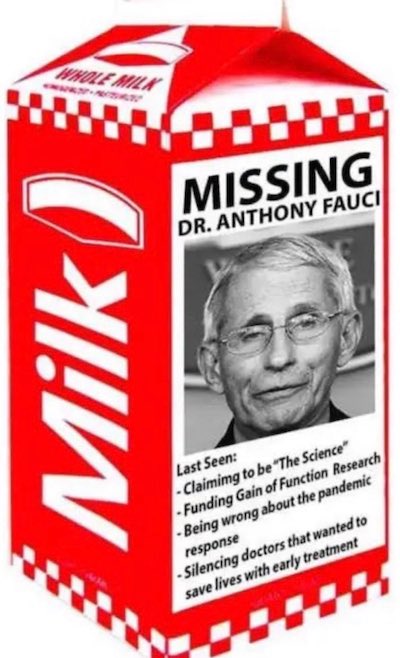

It wasn’t me
https://twitter.com/i/status/1502234046809657355

22 years
VIDEO: Argentine family comes home after 22-year drive around the world in a vintage car.
The Zapp family brought their 22-year journey to an end at the Obelisk in Buenos Aires pic.twitter.com/noFFRWrpCX
— AFP News Agency (@AFP) March 14, 2022

Support the Automatic Earth in virustime with Paypal, Bitcoin and Patreon.




